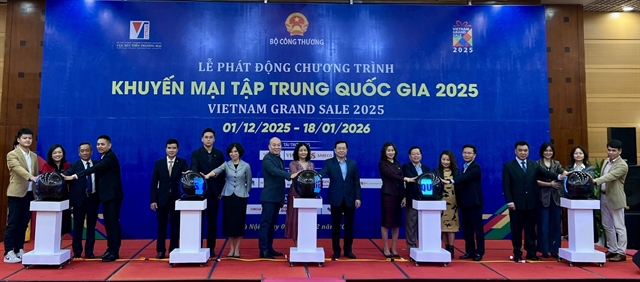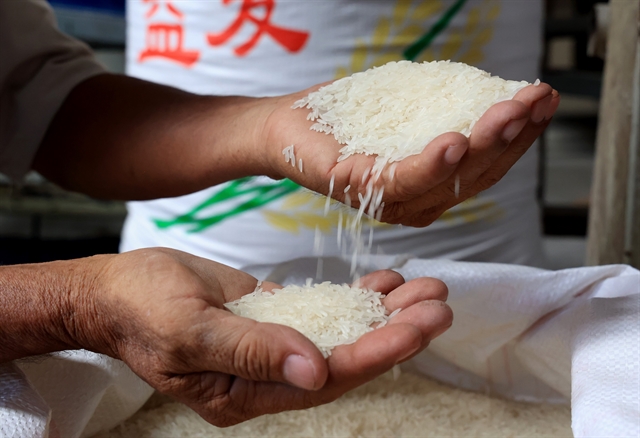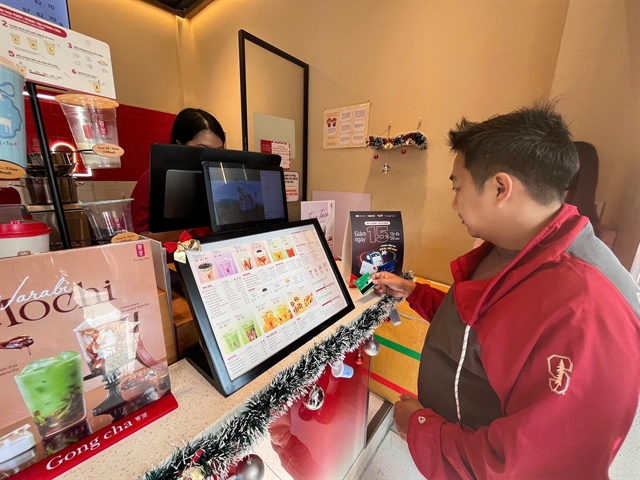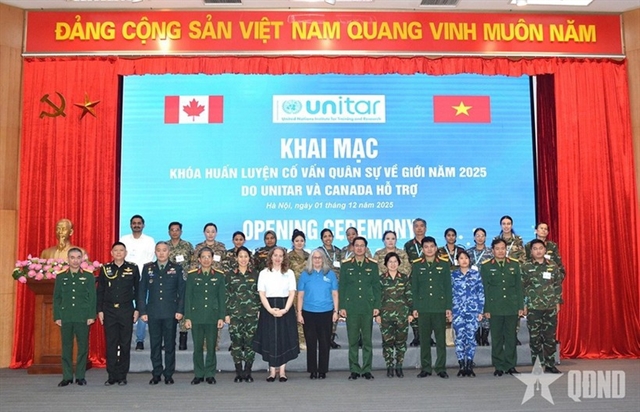 Economy
Economy

 |
| MARD is urged to coordinate with localities and associations to closely monitor the market and promptly provide full and accurate information on rice market developments for farmers and enterprises. —VNA/VNS Photo |
HÀ NỘI — The Ministry of Industry and Trade (MoIT) coordinates with the Ministry of Agriculture and Rural Development (MARD) and relevant agencies to research and promote the development of agricultural commodity trading floors, including rice, to ensure transparency in trading those products.
This is a part of Directive 10/CT-TTg on promoting the production, business, and export of rice in a sustainable, transparent, and effective manner in the new situation, issued by Prime Minister Phạm Minh Chính on March 2, 2024.
According to this directive, they will promote market development and trade promotion activities, and consumption of agricultural products, including rice.
Besides that, they support businesses to effectively build rice supply chains associated with logistics services to export farm produce to foreign markets.
The Prime Minister also requested MoIT, MARD, and localities to research and build pilot models to make traders join in the rice industry's value chain, aiming at both promoting its role as a bridge between farmers and enterprises and limiting risks for the participants of the chain.
He assigned the ministries and relevant agencies to direct, inspect, and supervise rice trading and export activities.
At the same time, they need to complete and submit to the Government a decree amending and supplementing Decree 107/2018/NĐ-CP on rice trading and export activities, aiming at creating an open and transparent business environment, ensuring the interests of farmers and maintaining the reputation of Vietnamese rice products.
The directive emphasises that they must study to streamline rice export hubs, ensuring healthy competition and business efficiency.
To ensure transparent, flexible methods in production, business, and export activities, the Prime Minister requested relevant ministries, agencies, provinces, centrally-run cities, the Vietnam Food Association, the Northern Food Corporation (VINAFOOD I), the Southern Food Corporation (VINAFOOD II) and other traders exporting rice to continuously implement the Prime Minister's Directive 24/CT-TTg dated August 5, 2023.
Meanwhile, MARD is urged to coordinate with localities and associations to closely monitor the market and promptly provide full and accurate information on rice market developments for farmers and enterprises, helping them have appropriate production and business plans.
According to MARD and several relevant agencies, the rice export situation in the global market is still favourable. The rice demand of countries remains high due to the impact of the El Nino phenomenon and armed conflict.
However, at present, the Mekong Delta provinces are harvesting winter-spring rice, so businesses are waiting for rice prices to go down, while farmers want to sell rice at high prices like the last months of 2023, the directive stated. If this situation persists, it will cause businesses to lose opportunities to export rice and affect the production and income of farmers.
Therefore, MoIT needs to closely monitor the world rice market and trading activities; and cooperate with relevant ministries and sectors to implement Việt Nam's rice export market development strategy until 2030 and the tasks specified in the Prime Minister’s directive.
Meanwhile, the Prime Minister directed the Minister of Finance and Governor of the State Bank of Vietnam to coordinate with relevant agencies to study and handle problems regarding VAT refunds.
On the other hand, they should coordinate with MARD and MoIT to have an appropriate plan for purchasing rice reserves.
The Governor of the State Bank of Vietnam is requested to direct commercial banks to create favourable conditions for farmers and businesses to access credit with preferential interest rates, fully meeting credit needs for purchasing and exporting rice, especially rice in the Winter-Spring crop of 2023-2024 in the Mekong Delta provinces, according to the directive.
Prime Minister Chính also asked MARD to focus on implementing the sustainable development project of one million hectares specialising in high-quality, low-emission rice cultivation associated with green growth in the Mekong Delta until 2030.
This ministry needs to coordinate with the Vietnam Cooperative Alliance to implement solutions improving the capacity of agricultural cooperatives in organising rice production and consumption, and providing input services.
Along with that, they promote training courses for farmers on knowledge about the market, agricultural business, changing thinking, and applying scientific advances in agricultural production and processing for farmers.
It needs to work with ministries, sectors, localities, and associations to seriously deploy the Prime Minister's Official Dispatch 13/CĐ-TTg dated February 6, 2024, on strengthening connectivity in logistics activities to promote consumption and export of agricultural, forestry, and fishery products.
Rice prices down
Directive 10/CT-TTg noted that in 2023, Việt Nam exported over 8.1 million tonnes of rice, earning nearly US$4.7 billion, an increase of 14.4 per cent in volume and 35.3 per cent in value compared to 2022. This was the highest export in the past 16 years.
Recently, Chairwoman of the Northern Food Corporation (Vinafood 1) Bùi Thị Thanh Tâm said, that since mid-January 2024, rice prices have decreased to VNĐ7,300-7,800 per kilo from the high level of over VNĐ9,000 in the third and fourth quarters of 2023 due to India's export ban. However, that price is still higher than that of the winter-spring crop of 2023. So, farmers still profit from rice production.
The main reason for the decrease in rice prices is now the harvesting stage. All regions harvest at the same time, causing congestion from fields, factories, and even inland ports. Furthermore, to purchase six million tonnes of rice, enterprises and traders need to prepare bank credit and logistics.
Besides that, Thailand, the Philippines and Indonesia also harvest in March-May. Some African countries now have a lot of rice in stock.
To solve the immediate situation of increased supply and falling prices, Tâm has recommended the General Department of State Reserves, the Ministry of Finance, to soon carry out the reserve purchasing programme to help enterprises have contracts and ensure rice quality in the warehouse.
In addition, according to Tâm, due to the difficulties this year, banks should reduce interest rates and loosen lending conditions. — VNS




